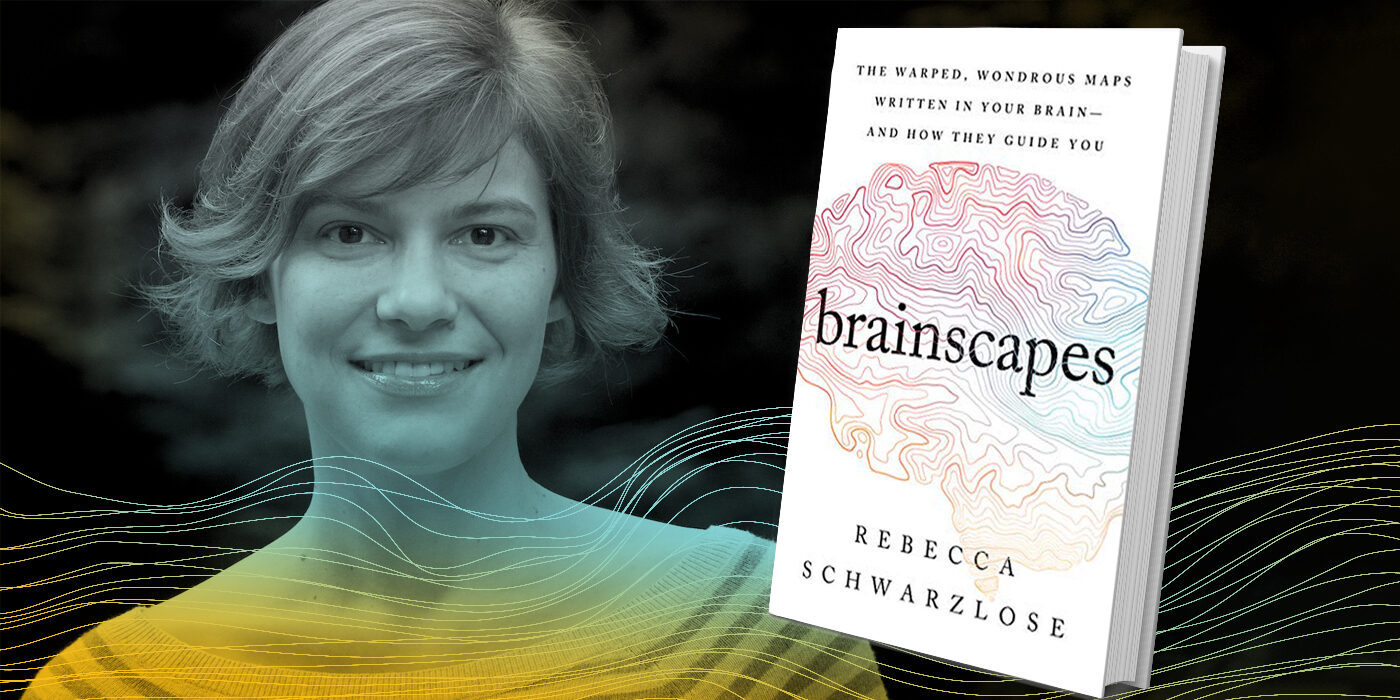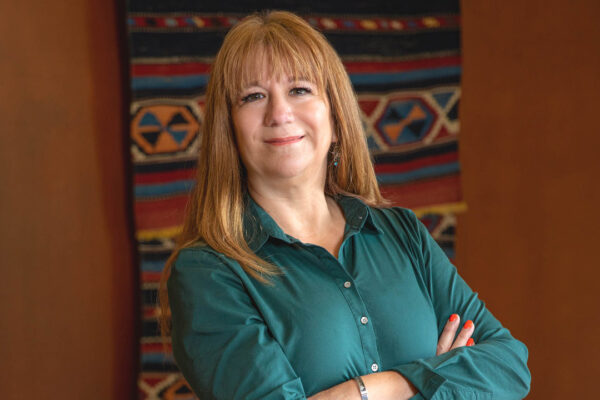In her debut book, Brainscapes: The Warped, Wondrous Maps Written in Your Brain — and How They Guide You, Rebecca Schwarzlose, a postdoctoral research scholar in the Department of Psychiatry at the School of Medicine, describes how brains create maps: collections of neurons that together support your senses, move your body, understand abstract concepts, remember your past and more.
The maps exist because the brain doesn’t have limitless space. Neurons that often interact need to be close together, and they are not equally distributed. If you were to look at the brain map of the body, you’d think our biggest appendage is our hands, because many more neurons are devoted to signals from the hands than, say, our backs. It becomes a chicken-and-egg question: Are our brain maps this way because we feel things with our hands, or do we feel things with our hands because of our brain maps?
The idea for the book came to Schwarzlose while she was at MIT working on her doctorate in neuroscience and writing about a part of the brain that helps us recognize faces. “There’s an area right next to it that supports recognizing human bodies,” she says. The two maps “are always right next to each other. And that got me thinking more broadly about what determines where specializations land in the brain.”
The resulting book, which has been praised by the New York Times for its lively prose and storytelling, not only gives readers an insight into how our brains work, but also recounts some of the history of neuroscience. Schwarzlose explains how the Mosin-Nagant Model 91 gun led to the discovery of the V1 primary visual cortex; how British neurologist John Hughlings Jackson was able to identify areas of the primary motor cortex by studying patients with seizures; and why “John,” a man who suffered a stroke, was able to describe a carrot with exactitude but unable to recognize one when presented with a drawing of it — or even recognize his own face in the mirror.
Schwarzlose finds all brains fascinating, human and animal. “The story of brain maps is one of tough trade-offs, not superiority,” she writes. “A brain map can’t be judged superior or inferior based on its intrinsic qualities; its value can be determined only in the context of a creature’s environment and moment-to-moment needs for survival.”
When trying to write about how sensitive pig snouts are, for instance, Schwarzlose so thoroughly envisioned what it might be like to be a pig (based on its brain map) that she can now no longer eat pork.
Plus, in showing how our brains create their maps, Schwarzlose asks basic questions about who we are and how we came to be that way. For instance, if evolution is the main driver for how we are the way we are, then why have brains been shown to draw entirely new maps based on early life circumstances? Baby rats raised in 2G gravity (twice the gravitational pull) developed new sensory maps around their paws. How did their brains know to do that without ancestors raised in 2G gravity?
The answer is that the brain has adapted over millenia and adapts based on early experiences. Blind children’s brains remap the visual cortex. A girl born with only half a brain developed brain maps that didn’t need the other hemisphere. Ferrets with damaged visual cortexes used the auditory cortex to see.
In looking at how our brain draws maps, Schwarzlose delves into how brains develop, how we navigate the world, the drawbacks and challenges of artificial intelligence and the computer-brain interface, and so much more. “The impact of brain maps on thought, health and technology is profound and far-reaching,” Schwarzlose writes. “They matter not just to scientists but to every person and creature on earth.”



